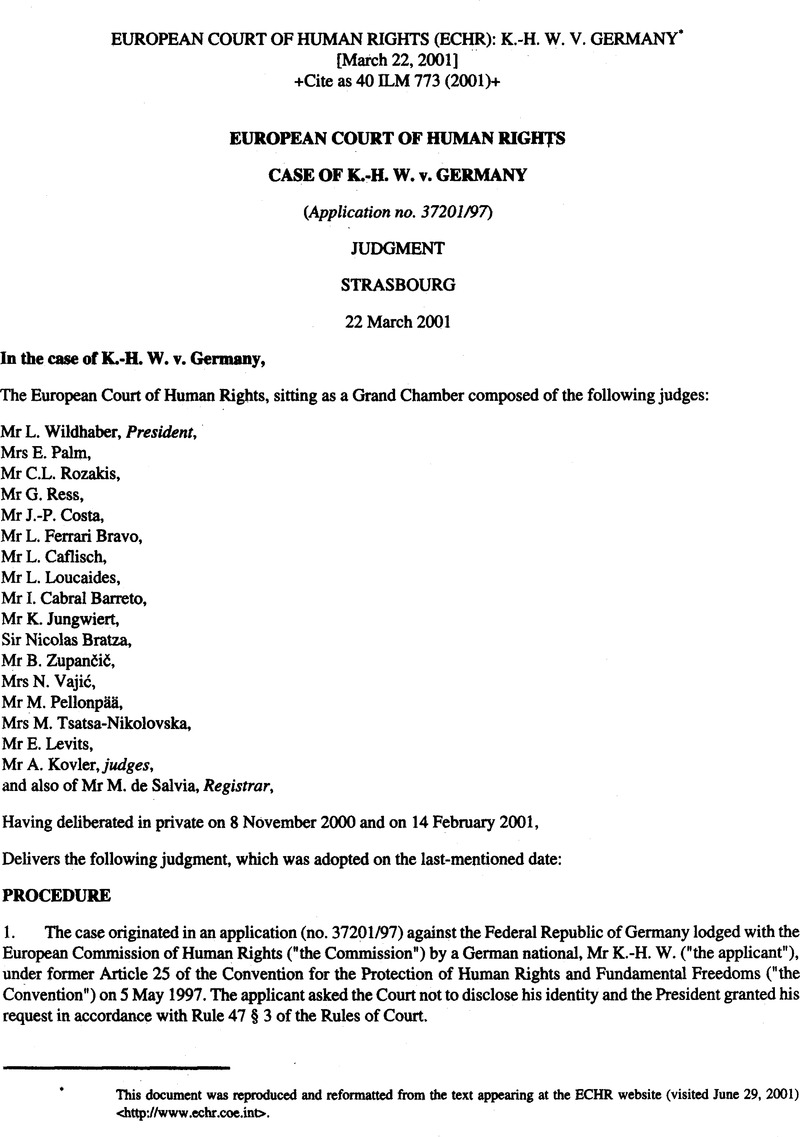No CrossRef data available.
Published online by Cambridge University Press: 27 February 2017

This document was reproduced and reformatted from the text appearing at the ECHR website (visited June 29, 2001) <http://www.echr.coe.int.>
1 Gustav Radbruch (1878-1949): German professor of law who considerably influenced the philosophy of law. Following the crimes of the Nazis, he formulated the principle, also known as “Radbruch's formula” (Radbruch'sche Formel), that positive law must be considered contrary to justice where the contradiction between statute law and justice is so intolerable that the former must give way to the latter.
1 IT-94-1, paragraph 623.
2 Paragraph 248, footnote 311.
1 The Regional Court found that it could not be determined which of the two accused had fired the fatal shot. In addition, it appears from the domestic judgments that at the time of the shooting the guns of the applicant and his co-accused were switched to automatic fire (auf Dauerfeuer eingestellt) and that they pulled their triggers five times altogether, each time producing a burst of two shots. As mentioned in the judgment (paragraphs 17 and 18), the Regional Court and the Federal Court accepted the contention of the applicant and his co-accused that the first shots had been warning shots.
2 In this connection, reference may be made to the separate opinion of Judge Loucaides in Streletz, Kessler and Krenz v. Germany.